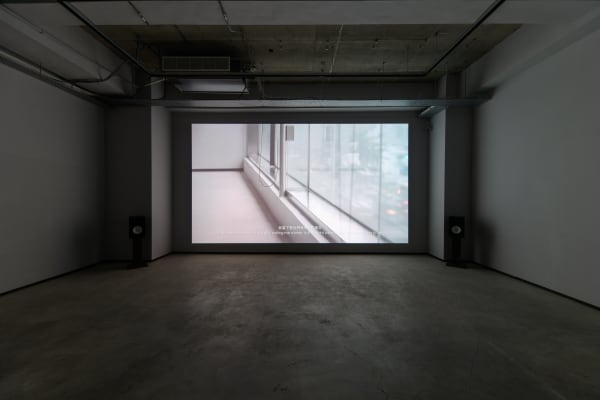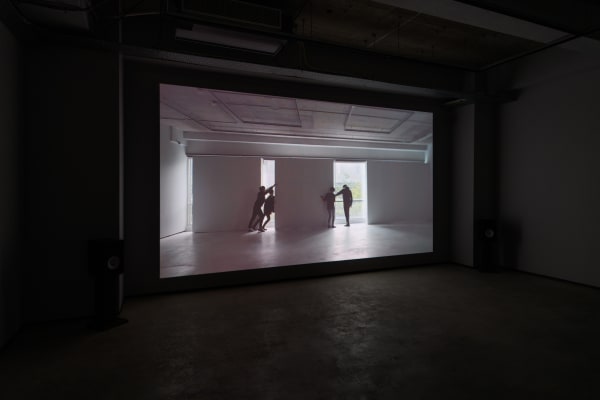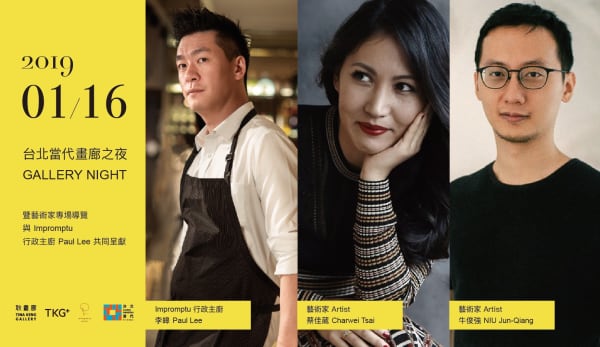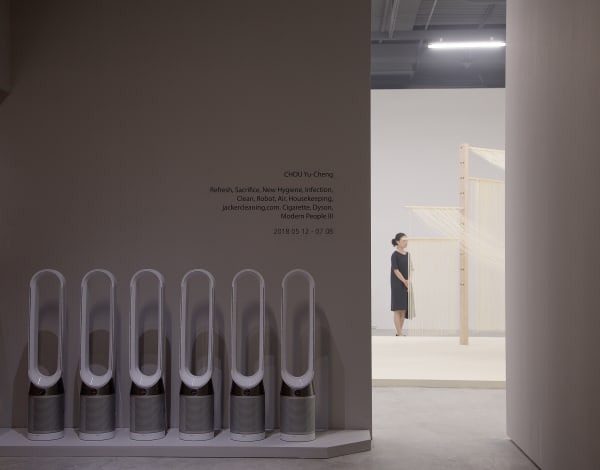2018 NIU Jun-Qiang Solo Exhibition: Curated by FENG Hsin
In the solo exhibition at Taipei Fine Arts Museum in 2012, cover, I invited participants to cover their memories at the exhibition and to retrieve them when the exhibition was over, during which artist and individuals revealed their life stories to each other. In the solo exhibition in 2014, based on the transformations of my own texts, flesh, and matters, I engaged in the discourse of the definition of “disappear”. In 2015, I elaborated on “fear” and “desire”. The fear is about being blind and the separation of relationships, while light bestows forms to all beings and creates the desire for sight. The two usher in the senses of completeness and rupture.
For each creative work, I do not discover stories solely from my own, but put myself in the work to observe, select, and digest my position to the outer world in the duration. Over the past three years, out of fear, I have become more and more open-minded to the contact and contemplation over faith - something that should guide people to find their own divinity and morality so as to capture the coexistence of shadow and light.
“In the mid-eighteenth-century Paris, Diderot led a group of scholars to write the great collective work Encyclopédie. Firstly, that the blind is positively deemed as ‘the different others’ is a cosmos order and logic of the blind’s that can be compared with the one we originally see as self-evident. Diderot held a position that people’s senses share vital relation to knowledge and that because the senses of mankind are diverse, the knowledge and the ideas derived from the knowledge shall be diverse as well.”
The definition of “blind” is also changing bit by bit in my works. “Blind” is not the inability to see, but the alternative existence of something once in visual form. The same applies to the existence of God to me as well.
Over the past period, departing from “what God is”, “how God looks like”, and “how it feels like in His presence”, I came up with a series of works recorded in images. Nevertheless, these works will not be showcased at the exhibition as if nothing ever happened in the venue. “Emptiness” and “nothingness”, “blank” and “being”, and “existence” and “eternity”, by which I aim to see the correlation between the intangible synesthesia in artistic experience and the abstract experience in faith as well as to converse on the paradox of sight’s existence.
How can we detect the aura in artworks? For art relies on the sense of sight heavily, questions about whether we still possess the ability to see and what we will see emerge after the sense of sight is removed from us. Aristotle once said, "…The reason is that this (sight), most of all the senses, makes us know and brings to light many differences between things.” Seeing is what we establish our own existence with as well as how we recognize self from others, and ultimately serves as the starting point for us to know the splendid universe.
NIU Jun-Qiang develops his works not only from revealing himself, but also his observation, decision and internalization during the process of creation. In the 2018 Niu Jun-Qiang Solo Exhibition, following the “fear” and “desire” touched in the 2015 NIU Jun-Qiang Solo Exhibition, the artist has transformed his experiences over the past three years and come to realize that“fear”itself is not“other”, but something we keep looking for to project to, by means of our unsettled heart and our nature. NIU takes it further and, with a more open-minded attitude, contemplates how faith guides people to find their own divinity and morality within to capture the coexistence of light and shadow. The status of “being blind” probed in the 2015 solo exhibition to the artist also went through a transformation in meaning. It does not simply relate to the physical aspect, , but moreover, the alternative existence of something once in visual form, just as “the existence of God” that NIU Jun-Qiang talks about in this solo exhibition.
NIU Jun-Qiang departed from “what God is”,“how God looks like”, and“how it feels like in His presence”and came up with a series of works in images. The conditions that are relative and yet reflective to each other, such as“emptiness”and“nothingness”,“blank”and“being”as well as“entity”and“eternity”, co-exist in this 2018 exhibition. NIU Jun-Qiang excels at showcasing indescribable, abstract perceptional experiences via image narrative. Through means of metaphor, audience will be slowly guided to an intricately-designed space. Residual or implied traces in the space, symbols and relationships that are indescribable in language shall become the portals for audience to pass through the consciousness and dive into the inner space of their own. Hence, the images created by Niu Jun-Qiang have been shifted from the visible to the ones that can only be imagined. The whole process works are like Jung’s Individuation Process. On one hand, the audience will be situated in a status where they see all the directions of the exhibition development via image narrative; on the other, the unconscious minds the audience that experience in these traces are reflected. The two consciously integrated levels enable the exhibition to go beyond content into space, and form an intercommunicating entity. Whether there lies the possibility of correlation between the intangible synesthesia in artistic experience and the abstract experiences in faith is the creation of NIU Jun-Qiang this time as well as the very core this exhibition intends to investigate.
NIU Jun-Qiang
Born in 1983, he graduated with MFA in New Media Art from Taipei National University of the Arts. His artworks mainly focus on the video, experimental film, photography and mixed media installations.
Most of NIU’s recent artworks spring from the daily, ordinary life and the experiences involved in such. He has worked with many participants to narrate their past experiences for the creation of a more united, joint experience.
During the creative process, NIU has investigated and examined the incredible relations between humans who do not really meet face to face physically and the life consciousness from the individuals to groups. Rather than focus on the materialism, he attacks on such a notion and looks at what can be the really persistent, unchanged, in humanity’s lifetime. NIU Jun-Qiang’s artworks have been featured in the short film competition at the Rotterdam International Film Festival (the Netherlands), Pixilerations Tech Art Exhibition (USA) , the Aguilar International Short Film Festival (Spain), Tours Asian Film Festival (France), ARTchSO Video Festival in Rennes (France), Interdisciplinary Art Festival (Tokyo, Japan), It Takes Four Sorts: Cross-Strait Four-region Artistic Exchange Project (Taiwan, Mainland China, Hong Kong, and Macau), Taipei Golden Horse Film Festival, Taipei Arts Awards in Taipei…etc. His works also had been showed in Berlin, Istanbul, Tel Aviv, Mexico, Seoul, Beijing, Shenzhen.















